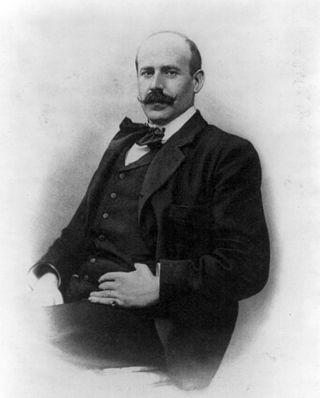Related Research Articles

Ignacio Zuloaga y Zabaleta was a Spanish painter, born in Eibar (Guipuzcoa), near the monastery of Loyola.

Julio Romero de Torres was a Spanish painter. His brothers, Rafael and Enrique, also became painters.

Francisco Pradilla Ortiz was a prolific Spanish painter famous for creating historical scenes.

Ignacio Pinazo Camarlench was a Spanish painter from Valencia. He was one of the most prominent Impressionist painters from late nineteenth century Spain.

Marinus van Reymerswaele or Marinus van Reymerswale was a Dutch Renaissance painter mainly known for his genre scenes and religious compositions. After studying in Leuven and training and working as an artist in Antwerp, he returned later to work in his native Northern Netherlands. He operated a large workshop which produced many versions of mainly four themes: the tax collectors, the money changer and his wife, the calling of Saint Matthew and St. Jerome in his study.
Santos Balmori Picazo was a Spanish-Mexican painter whose heavily European style was not appreciated by his contemporaries of the Mexican muralism movement, but he had influence with the succeeding Generación de la Ruptura artists. He trained and began his art career in Europe moving later to Mexico City. He became a professor and researcher at the Escuela Nacional de Artes Plásticas training younger artists such as Rodolfo Nieto, Pedro Coronel, Carlos Olachea and Juan Soriano. As a teacher, he did not stop drawing but he did not paint professionally again until after retirement, having a number of exhibitions later in life.

Enrique Simonet Lombardo was a Spanish painter.

José Asensio Lamiel was an Aragonese painter and sculptor born in Calanda in the Spanish comarca of Bajo Aragón.

Carlos Sebastián Pedro Hubert de Haes was a Spanish painter from Belgium. He was noted for the Realism in his landscapes, and was considered to be the "first contemporary Spanish artist able to capture something of a particularly Spanish 'essence' in his work". He was cited along with Jenaro Perez Villaamil and Aureliano de Beruete as one of the three Spanish grand masters of landscape painting, the latter of which was his pupil.

Carlos Luis de Ribera y Fieve was a Spanish painter, son of Juan Antonio Ribera.
Fernando Briones Carmona was a Spanish painter. He was born in Écija and died in Madrid, where he spent most of his life.

Francisco José Domingo y Marqués was a Spanish painter in the Eclectic style.
Ángel María Cortellini Hernández was a Spanish painter. He received the gold medal of the National Exhibition for his painting, Retrato de señora.

José Aguiar or José Aguiar García was a painter and muralist from La Gomera.
Andres Rossi was a Spanish artist. He worked as a painter, draughtsman, print maker, sculptor and writer in Madrid and Seville.

Carmen Jiménez Serrano was a Spanish painter, sculptor, and professor.
María del Carmen Laffón de la Escosura was a Spanish figurative painter and sculptor. She was a member of the Real Academia de Bellas Artes de San Fernando from 1998 until her death, and received numerous awards and honours, such as the Grand Cross of the Civil Order of Alfonso X, the Wise in 2017.
Adela Tejero Bedate was a Spanish painter. Her work is held in the permanent collections of Museo Nacional Centro de Arte Reina Sofía and Museo ABC

Manuel Ruiz Guerrero was a Spanish painter and illustrator.

José Marcelo Contreras y Muñoz was a Spanish painter and art professor. Largely remembered as a painter of historical scenes, he also created portraits and genre works.
References
http://servicios.ideal.es/granadinos/gabriel_morcillo.html Archived 2016-03-04 at the Wayback Machine
- ↑ Biografía de Gabriel Morcillo.
- ↑ Ideal: Emotivo homenaje en Lanjarón al pintor Gabriel Morcillo. Publicado el 18 de febrero de 2008.
- ↑ Museo Nacional del Prado: Gabriel Morcillo Raya.
- ↑ El Economista: Cultura adquiere 34 obras de arte en 2008 por importe de 856.000 euros para los museos andaluces. Publicado el 20 de enero de 2009.